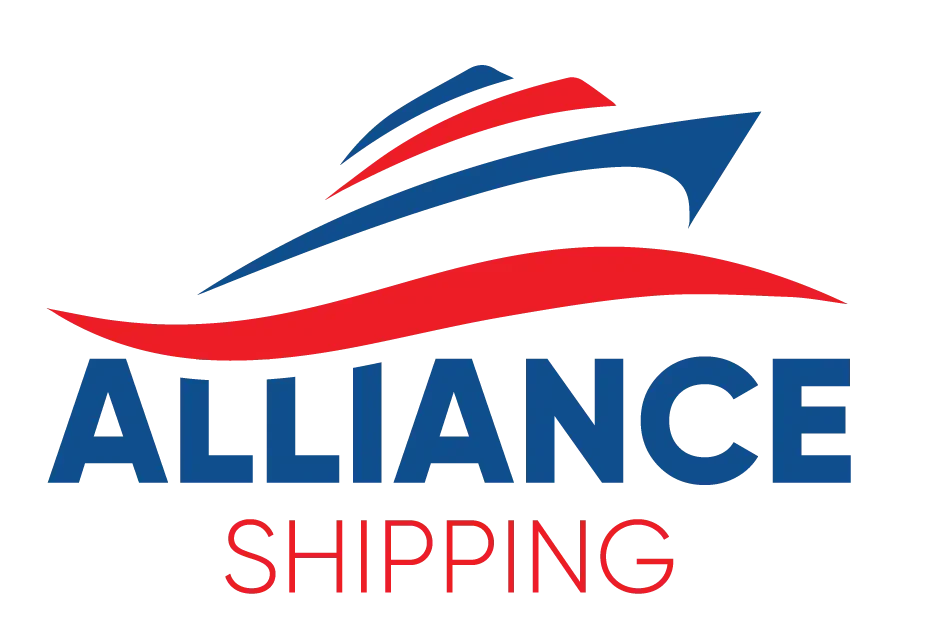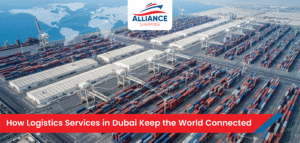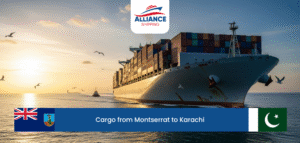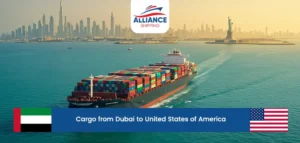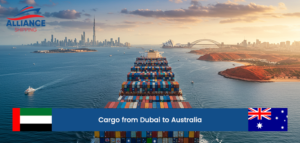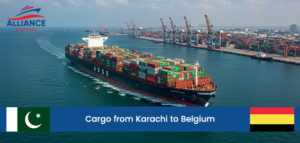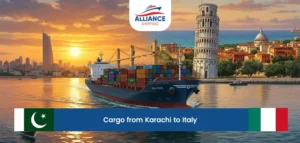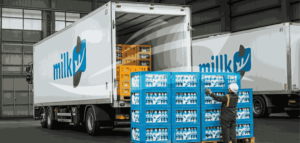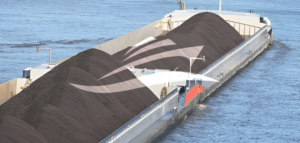When you are importing or exporting, especially by sea, you’ll come across many industry terms like freight forwarders, incoterms, and demurrage. You can learn about these with time. However, you need to familiarize yourself with two key terms widely used in the shipping industry: LCL and FCL. They’re super important because you need to decide between them for your shipping needs. Alliance Shipping has created this guide to explain LCL vs. FCL, how they work, their pros and cons, and how to pick the best option for your business.
What is LCL Shipping?
LCL shipment meaning or full form is “Less than Container Load.” It is a shipping method used when your shipment doesn’t occupy an entire container. Instead, your goods are combined with shipments from other customers into the same container. This way, everyone shares the space and the cost.
There are many types of shipping containers, and all come in various sizes. Usually, they are 20 feet or 40 feet long. A 20-foot container can hold about 28 to 33 cubic meters (CBM) of goods, while a 40-foot container can hold around 58 to 60 CBM. If your shipment doesn’t fill the whole container, LCL shipping comes in handy.
For example, if you’re sending a few boxes of toys from Dubai to Russia, and your total cargo is only 8 CBM, it’s much cheaper to use LCL and share the container with other shipments going in the same direction. Here, instead of paying for the whole container space, you only pay for the space your goods use.
Key Features of LCL Shipping
Now, you know what LCL shipment is. Below, we have highlighted some of the features LCL provides for importing and exporting goods from one country to another.
Cost-Effective Shipping
LCL shipment is cheaper if you don’t have enough goods to fill a full container. In LCL shipping, your cargo shares space in a container with goods from other businesses. So, everyone pays for their share of space, reducing overall costs.
Flexible and Frequent Shipments
With LCL, you don’t have to wait until you have a full container. You can send small shipments whenever you need. It helps you respond quickly to customer demand and keep your supply chain moving without delays.
Great for Small Shipments
LCL is perfect if you’re shipping a small amount like a few boxes or pallets. You don’t need to fill a whole container, which makes it easier and more affordable to send smaller loads across long distances.
Less Need for Storage
Since you can ship more often with LCL, you don’t need to keep a lot of stock in storage. This helps you reduce warehouse space and costs, and you can keep your inventory fresh by getting new goods more often.
More Routes and Sailings
LCL services usually have more frequent departures and serve more destinations than full container loads. This gives you more options and makes it easier to reach different markets, even if you’re shipping smaller amounts.
What is FCL Shipping?
FCL meaning in shipping or its abbreviation is “Full Container Load.” It is a shipping method used when your shipment is big enough to fill an entire container. In FCL shipping, the container is reserved for you only, and no other customer’s cargo is placed inside. Even if you don’t fill the entire container, you are entitled to the whole space when you book an FCL container.
FCL is a good option when you are shipping a large amount of goods. For example, if you are sending 30 CBM of furniture from China to South Africa, booking a 20-foot or 40-foot FCL makes sense. Here, you are not paying for the space used like in LCL. Here, you are paying for the full container space, irrespective of the size of usage and whether it is full or not.
Key Features of FCL Shipping
Full Container, Full Control
With FCL, you get an entire container just for your goods. You don’t share space with other shippers, which gives you more control over how your cargo is packed, handled, and shipped. This also means you can better customize the packing to optimize space, making the process more efficient.
Faster Transit Time
FCL shipments usually reach their destination faster than LCL. Since the container is packed and sealed at the origin, there are fewer stops and less handling along the way, which saves time. With fewer touchpoints, the risk of delays is reduced, helping you meet tight delivery schedules.
Ideal for Large Shipments
FCL is best if you have enough goods to fill most or all of a container. Whether it’s a full truckload or a large number of pallets, it’s more cost-effective when you’re shipping in bulk. This makes it a great option for businesses that have regular, high-volume shipments, providing consistency in pricing.
Lower Risk of Damage
Because the container only holds your goods, there’s less handling and no mixing with other shipments. This reduces the chances of damage, loss, or contamination during transit. Additionally, since the cargo is sealed in one container, it’s easier to ensure security, and risks are also reduced.
Cost Efficiency at Scale
Even though FCL costs more upfront, it becomes cheaper per unit when you’re shipping in large volumes. The more space you use, the better value you get for your shipping cost. This is particularly beneficial for businesses with ongoing large shipments, helping to reduce long-term logistics expenses.
How to Pick Between FCL vs LCL shipping Shipping Options
Below is a quick comparison table to help you decide the best shipping option based on your shipment’s size, urgency, and budget. After the table, we have highlighted in more detail with examples to guide you in selecting the right container for your shipping requirements.
| Factor | FCL (Full Container Load) | LCL (Less than Container Load) |
| Shipment Volume | Best for shipments over 15 CBM; full container used | Ideal for shipments under 13 CBM; pay only for used space |
| Weight | Flat rate; better for heavy cargo | Charged by weight or volume (whichever is greater) |
| Freight Cost | Lower cost per unit for large volumes | Cheaper for small shipments but includes more handling fees |
| Speed | Faster (no consolidation delays); fewer stops | Slower due to consolidation and multiple handling points |
| Trackability | Easier and more accurate tracking | More complex tracking due to shared container |
Shipment’s Volume
Volume is one of the first things to consider when choosing between FCL and LCL. A 20-foot container holds about 33 cubic meters (CBM) of cargo. Let’s assume your business is thinking of shipping 10 CBM of packaged goods monthly. In such a case, LCL is best, as you’ll only pay for the space used. However, if your shipping volume is high then switching to FCL would be the right option. It helps lower the cost per CBM.
Shipment’s Weight
Another important thing to know is the shipment’s weight. LCL charges are based on volume or weight, whichever is greater, typically using a rule like 1 CBM = 1,000 kg. So, if your cargo is heavy but compact (e.g., machinery parts), LCL might become expensive quickly.
For instance, shipping 5,000 kilograms of steel parts in LCL could cost more than an FCL shipment due to overweight charges. FCL usually has a flat rate per container, making it more cost-effective for heavy shipments. If your cargo is dense, FCL gives you more value for money and avoids complex pricing linked to dimensional weight.
Freight Cost
Freight cost isn’t just about space; it includes handling, surcharges, and transit time. LCL seems cheaper upfront, especially for small shipments under 15 CBM, where you pay only for your portion. But hidden fees like consolidation, documentation, and terminal handling can add up.
For example, shipping 8 CBM via LCL may cost $900, but at 12 CBM, FCL could cost $1,200, less than $100 per CBM. So, if your volume nears the break-even point, FCL gives better long-term value and fewer surprise charges.
Speed
FCL is often faster than LCL. Full containers skip the consolidation and deconsolidation process, cutting transit time by 2–5 days. For example, a shipment from Shanghai to Los Angeles via FCL may take 18–20 days, while LCL may take 23–25 days due to extra handling.
If you’re shipping seasonal products or urgent inventory, FCL ensures quicker delivery. LCL is fine for non-urgent shipments, but if timing is crucial, FCL’s time savings could directly impact your sales or customer satisfaction.
Trackability
FCL shipments are easier to track since one party controls the entire container, and there are fewer handovers. With LCL, delays affecting other shippers in the container (like customs issues) could impact your delivery.
For example, your 5 CBM cargo might be held up because another shipper in the same container didn’t provide the correct paperwork. Most carriers now offer online tracking, but real-time visibility is more consistent with FCL.
Let Alliance Shipping Handle Your LCL & FCL Needs
Choosing between LCL and FCL can be tricky, depending on your needs. Let Alliance Shipping handle your shipment needs. Whether you’re a small business looking to save with LCL or a larger company needing the speed and control of FCL, we’re here to help. Our team will guide you through the process and help you find the best shipment option. Contact Alliance Shipping today, and let us handle your shipping so that you can focus on your business.
Call us at +971 56 649 5103 or email us at manager.dxb@theallianceshipping.com.
People Also Ask
[sp_easyaccordion id=”20550″]
